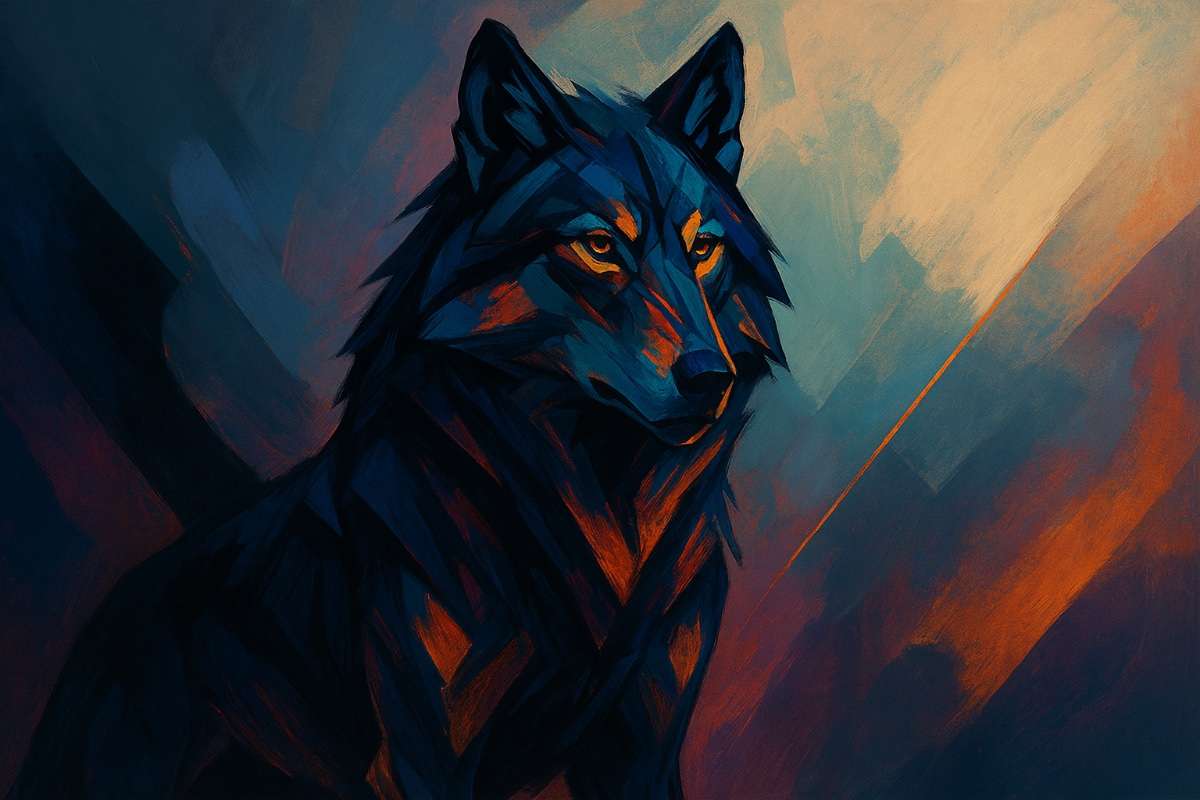The Recreation of the Dire Wolf: A Modern Scientific Feat

A wolf from the past, reimagined for the present
The recent announcement that three genetically engineered wolf pups—Romulus, Remus, and Khaleesi—were born bearing the traits of the long-extinct dire wolf has stirred excitement, skepticism, and profound philosophical questions. Engineered by Colossal Biosciences, a Texas-based biotechnology company dedicated to the so-called “de-extinction” of lost species, these pups were created not by cloning, but by editing the genome of a modern gray wolf to reflect the physical characteristics of the dire wolf.
What makes this event extraordinary is not only the scientific complexity behind it, but also its implications for our understanding of extinction, nature, and biotechnology. Rather than a perfect replica, the pups are a genetic approximation—a recreation, not a resurrection. Yet they symbolize something larger: a human attempt to reclaim the biological past using tools of the future. As we stand on the threshold of being able to reintroduce ancient forms of life, we must ask ourselves whether this power is one we are prepared to wield, and for what purpose we intend to wield it.
The dire wolf: separating myth from biology
A prehistoric predator, not just a Game of Thrones myth
Popular culture has transformed the dire wolf into a mythical creature, thanks in part to Game of Thrones. However, the real dire wolf (Aenocyon dirus) was very much a biological reality—an apex predator that once roamed the grasslands and forests of North America. Weighing around 60 to 70 kilograms and equipped with powerful jaws, dire wolves were likely pack hunters and formidable competitors in the Ice Age food chain.
Unlike gray wolves, dire wolves had broader skulls and more robust builds. Fossils from the La Brea Tar Pits and other sites reveal that they lived alongside saber-toothed cats, mammoths, and other now-extinct megafauna. Around 10,000 years ago, however, the dire wolf disappeared—part of a wider extinction wave that struck many large Ice Age mammals. Their extinction has been attributed to a mix of climate change, loss of prey, and competition with smaller and more adaptable species like the gray wolf (The Science Behind the Return of the Dire Wolf, Charlotte Hu).
Dire wolves and gray wolves: genetically distinct
One of the most crucial scientific insights into dire wolves came in 2021, when a landmark study published in Nature confirmed that dire wolves were not closely related to gray wolves, coyotes, or even jackals. Instead, they represented a unique evolutionary lineage that diverged from other canids more than five million years ago (Dire wolves were not wolves, Angela Perri). This finding crushed any lingering hope of finding surviving relatives of the species and underscored just how far removed modern wolves are from their extinct cousins.
This genetic distance means that scientists cannot simply extract dire wolf DNA and “clone” the species back into existence. There is no living genome to replicate, no template that can be reassembled in full. What Colossal Biosciences has done, then, is something different: they have selected a few key traits from what we do know about the dire wolf and edited them into a gray wolf genome. The result is not a dire wolf in the strict biological sense—but an engineered creature that walks and looks much like one.
The process behind the recreation
Partial DNA, selective editing
Because no full dire wolf genome exists, researchers worked with fragments obtained from fossilized remains. These fragments were analyzed to identify specific traits thought to be unique to the dire wolf—wider skulls, thicker coats, larger size, and robust limb structure. Fourteen genes believed to control these traits were identified and isolated. These genes were then edited into gray wolf embryos using the CRISPR-Cas9 system, a revolutionary gene-editing technique that allows precise changes to DNA sequences (Dire wolves have been extinct for over 10,000 years, Marianne Guenot).
The resulting embryos were implanted into domestic dog surrogates, chosen for their compatibility and manageability. When the three pups were born healthy, researchers hailed the process as a success. The pups displayed the anticipated physical characteristics: broader heads, heavier builds, and behavior patterns that appeared to align with dire wolf theories based on fossil studies. Still, they are genetically closer to gray wolves than to the extinct species they were designed to mimic.
Romulus, Remus, and Khaleesi: symbolic and scientific
Naming the pups after figures of legend and pop culture was no accident. Romulus and Remus, the mythical founders of Rome, were raised by a she-wolf—an origin story resonating with themes of wildness and human ambition. Khaleesi, a nod to Daenerys Targaryen from Game of Thrones, evokes the fantasy of commanding ancient beasts. These names reflect not just marketing savvy, but the symbolic nature of the project: it’s not merely about animals, but about the human fascination with power, history, and control over life itself.
Colossal Biosciences and the business of extinction
The company behind the wolves
Colossal Biosciences, co-founded by Harvard geneticist George Church and tech entrepreneur Ben Lamm, has positioned itself as a pioneer in the field of de-extinction. The dire wolf is only one of several species the company has targeted. Other projects include reviving the woolly mammoth, the thylacine (Tasmanian tiger), and even the dodo. According to Colossal, these efforts are not just about spectacle or novelty—they are meant to restore ecological balance and offer new tools for conservation (Colossal Biosciences, Wikipedia).
Ben Lamm has stated that the long-term goal is “rewilding” ecosystems and reversing biodiversity loss. By creating ecological proxies for extinct animals, Colossal hopes to restore trophic chains disrupted by human activity. For example, bringing back a mammoth-like creature could, in theory, help restore the tundra by flattening snow and fertilizing soil with droppings. The dire wolf project is a proof-of-concept for this broader vision: engineered animals with targeted traits, designed to fill extinct ecological roles.
Ethical, legal, and ecological questions
Yet this vision is not without controversy. Critics argue that de-extinction diverts attention and resources away from more urgent environmental needs, like habitat preservation and combating climate change. Some bioethicists also warn about the risks of releasing genetically engineered creatures into ecosystems that have long since adapted to their absence. Dr. Evie Kendal points out that reintroducing extinct animals could disrupt existing food chains, spread disease, or create suffering for animals not suited to current environments (Back from the dead, Patrick Carlyon).
The U.S. Department of the Interior, under a former Trump administration official, even suggested that successful de-extinction projects might justify abolishing the Endangered Species Act—a position that caused alarm among conservationists. If species can be re-engineered at will, what obligation remains to protect those that still exist? (After Dire Wolves Are Resurrected, Tristan Balagtas)
Rewilding or rewriting nature?
Nature as laboratory
One of the deeper issues raised by this project is the redefinition of nature itself. Are these engineered wolves “natural”? Do they belong in the wild, or are they laboratory artifacts? By constructing animals from fragments of genetic data, we risk shifting from conservation to fabrication—replacing the intrinsic value of ecosystems with the engineered logic of the biotech industry.
This concern is amplified by the fact that engineered species, like the new dire wolves, may soon be patented or licensed. The transformation of life into intellectual property is not a new development, but its extension to entire species raises profound ethical questions. As synthetic biology advances, we may find ourselves living in a world where “wild” animals are owned by corporations and designed for specific ecological or commercial functions.
Function over form
Supporters of the dire wolf project argue that form matters less than function. If a genetically modified wolf can fulfill the same ecological role as a dire wolf—helping control deer populations, for example—then its value lies in its utility, not its genetic purity. George Church has often stressed that conservation biology must adapt to the realities of the Anthropocene. In his view, we should not aim to perfectly recreate extinct species, but to restore their ecological impact in any viable form.
But this utilitarian view clashes with more traditional conservation philosophies, which emphasize protecting existing biodiversity and maintaining the integrity of natural systems. If we begin replacing extinct species with engineered substitutes, are we truly preserving life—or merely mimicking it?
Conclusion: awe, ambition, and ambiguity
The recreation of Romulus, Remus, and Khaleesi is a technological marvel, a biological puzzle, and a philosophical provocation all at once. It shows that the limits of extinction are more flexible than previously imagined—but also that the line between nature and artifice is becoming increasingly blurred. These animals are not dire wolves in the strict sense, but something new: creatures shaped by human knowledge, ambition, and selective memory of the past.
As we move further into the age of synthetic biology, we must ask not just whether such feats are possible, but what they mean. Do we pursue these projects for ecological healing, scientific curiosity, or the thrill of mastery over nature? Can engineered life truly replace lost biodiversity—or does it simply remind us of what we’ve lost? In trying to bring back the past, we may be creating an entirely different future—one in which life itself is no longer discovered, but designed.
References
- The Science Behind the Return of the Dire Wolf, Charlotte Hu
- Dire wolves have been extinct for over 10,000 years, Marianne Guenot
- Back from the dead: Dire Aussie warning over resurrection of extinct species, Patrick Carlyon
- After Dire Wolves Are Resurrected, Trump Administration Says U.S. Endangered Species List Should ‘Go Extinct’, Tristan Balagtas
- Colossal Biosciences, Wikipedia
- Dire wolves were not wolves, Angela Perri

















